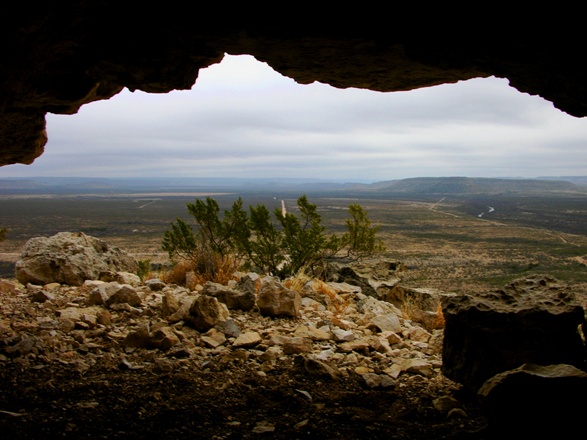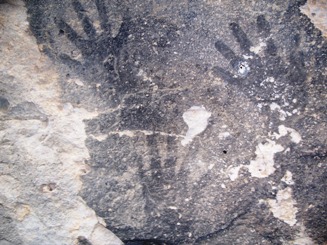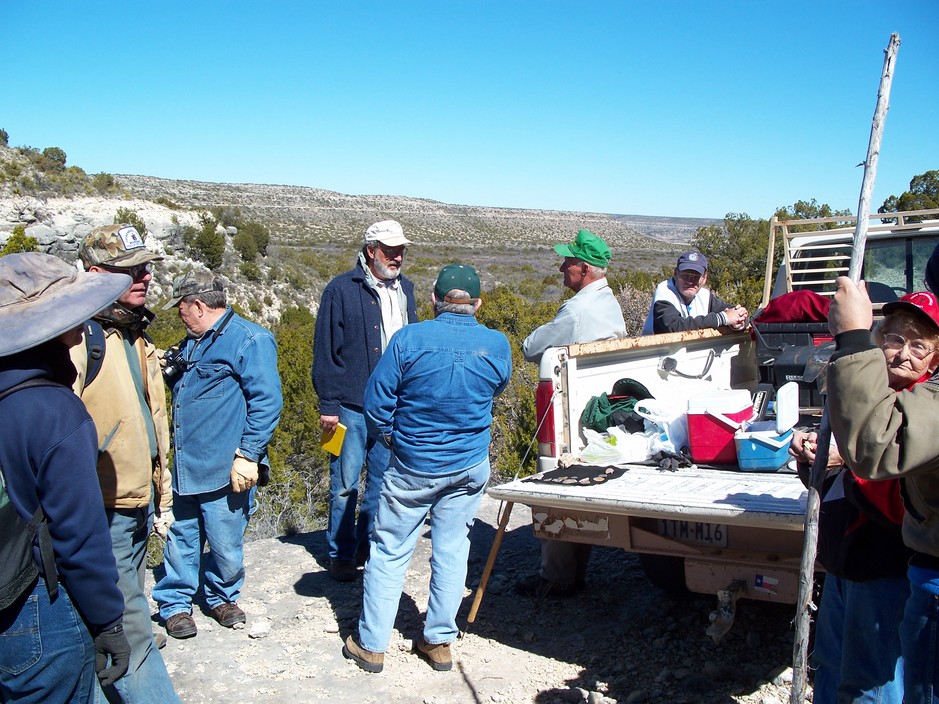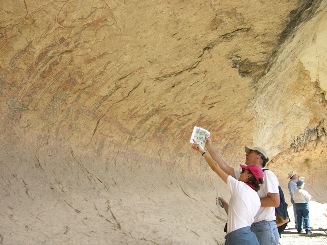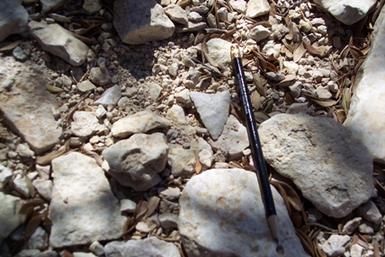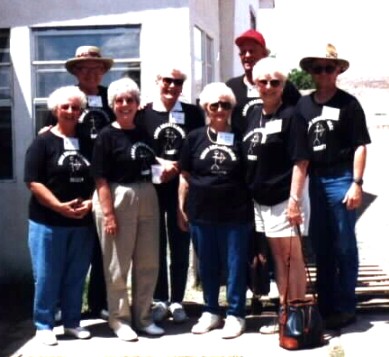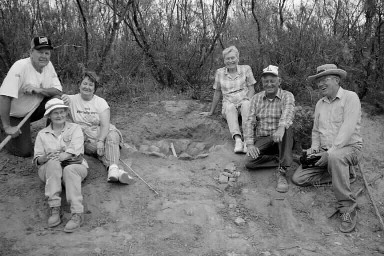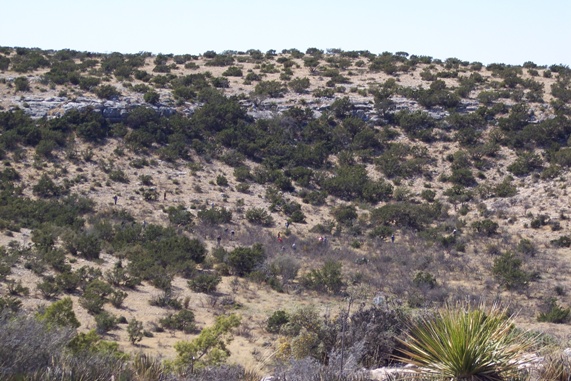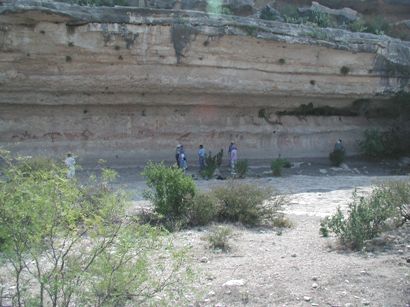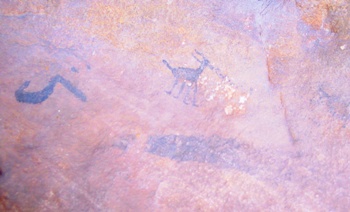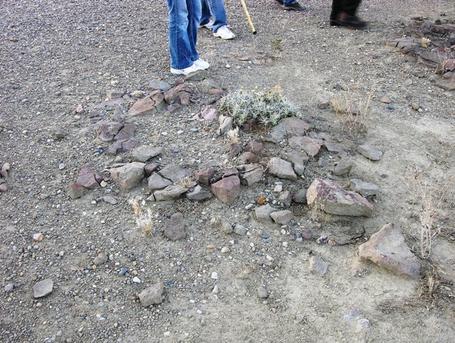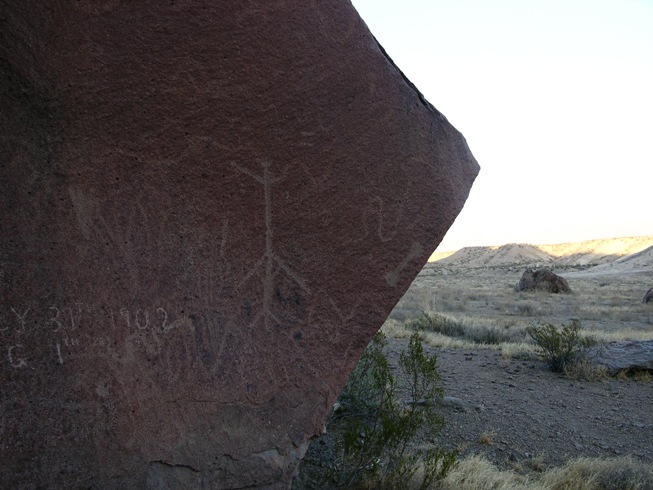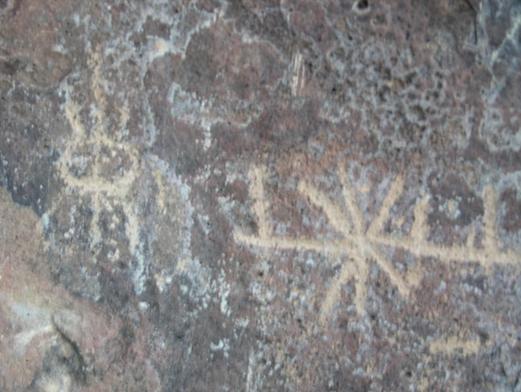Iraan Archeological Society
PO Box 183 Iraan, Texas 79744-0183
What was it like to view the Pecos River Valley from 600 years ago? From 2,000 years? From 8,000 years ago?
What remains from those prehistoric times? What has perished? What can we learn of how those ancient Texans lived? What can we know of what they thought, of what they dreamed, of what they believed?
What is our obligation to their memory?
Stone remains, marking where they lived. Yet questions remain. Why here, in such a precarious location?
Sometimes something so ephemeral as smoke and handprints remains. Again, the questions arise. What does this mean? What messages do these hands attempt to signal to us?
Whatever the members of the IAS discover, wherever they go, in the blazing heat of late spring or the cold depths of winter, they will search and record and share great memories shared in remote places. For each of them, the camaraderie of the trips is almost as much fun as working to learn of their neighbors in time and save a bit of the record of the past for those who follow us.
What is out there to be seen? To be discovered? To be recorded?
What traces remain of ancient fires and tools thousands of years old? What can we do to help preserve these fragile traces as wind and water and time carry wear them away?
The IAS is also a member organization in the Texas Archeological Society (TAS) .
Members regularly participate in the annual TAS Field School.
The Society conducts field trips throughout the year. Most trips are held on weekends to allow greater participation. Some trips include overnight trips as an option. Field trips are open to all IAS members and selected guests.
Bakersfield
Meyers' Spring
Field Trips can be easy or rugged, but they always provide a brief escape from the modern world!
IAS members from Iraan, Midland, San Angelo, Odessa, and Alpine met at 9 a. m. at the Iraan Museum for a trip to a remote cave on a ranch about fifteen miles south of Bakersfield on a private ranch.
After driving to the ranch, the group traveled on ranch roads to a deep rugged canyon, then worked their way down to the shelter.
Here, members of the Texas Archeological Society Rockart Task Force--aided by IAS members--spent several hours recording the unusual pictographs painted on the cave walls by Native Americans (Indians) who once lived in this area.
Later, the group traveled to other sites where they recorded mortar holes, middens, and artifacts.
View from Indian Head site
Hearth site at Indian Head
Petroglyph Panel
Petroglyph handprint?
Petroglyph Panel
Mortar hole in shelter beneath boulders
Petroglyph Panel
________________________________________________________________________________________________________
INDIAN HEAD SITE BIG BEND NATIONAL PARK
________________________________________________________________________________________________________

